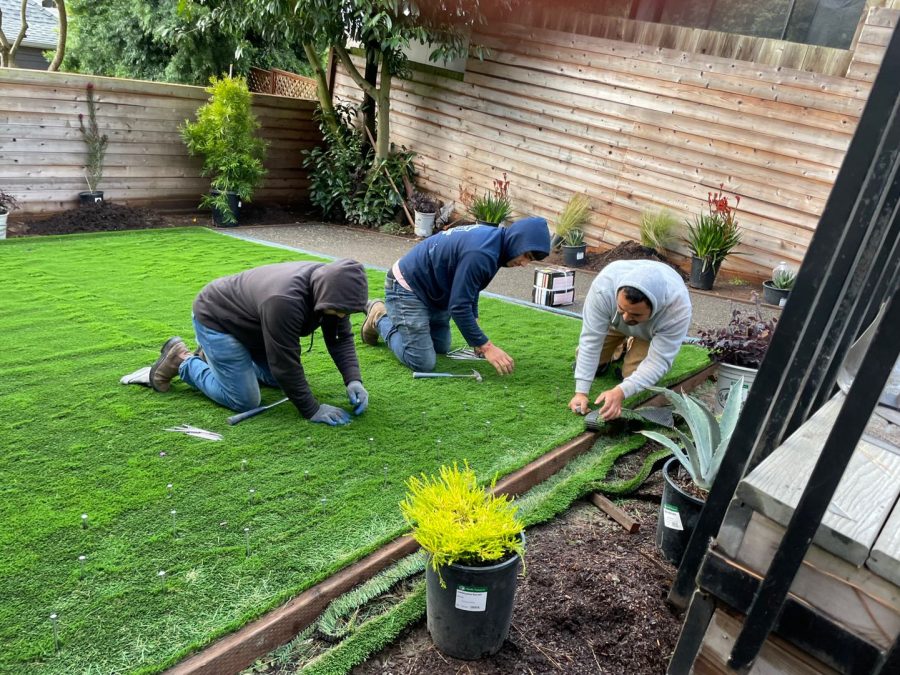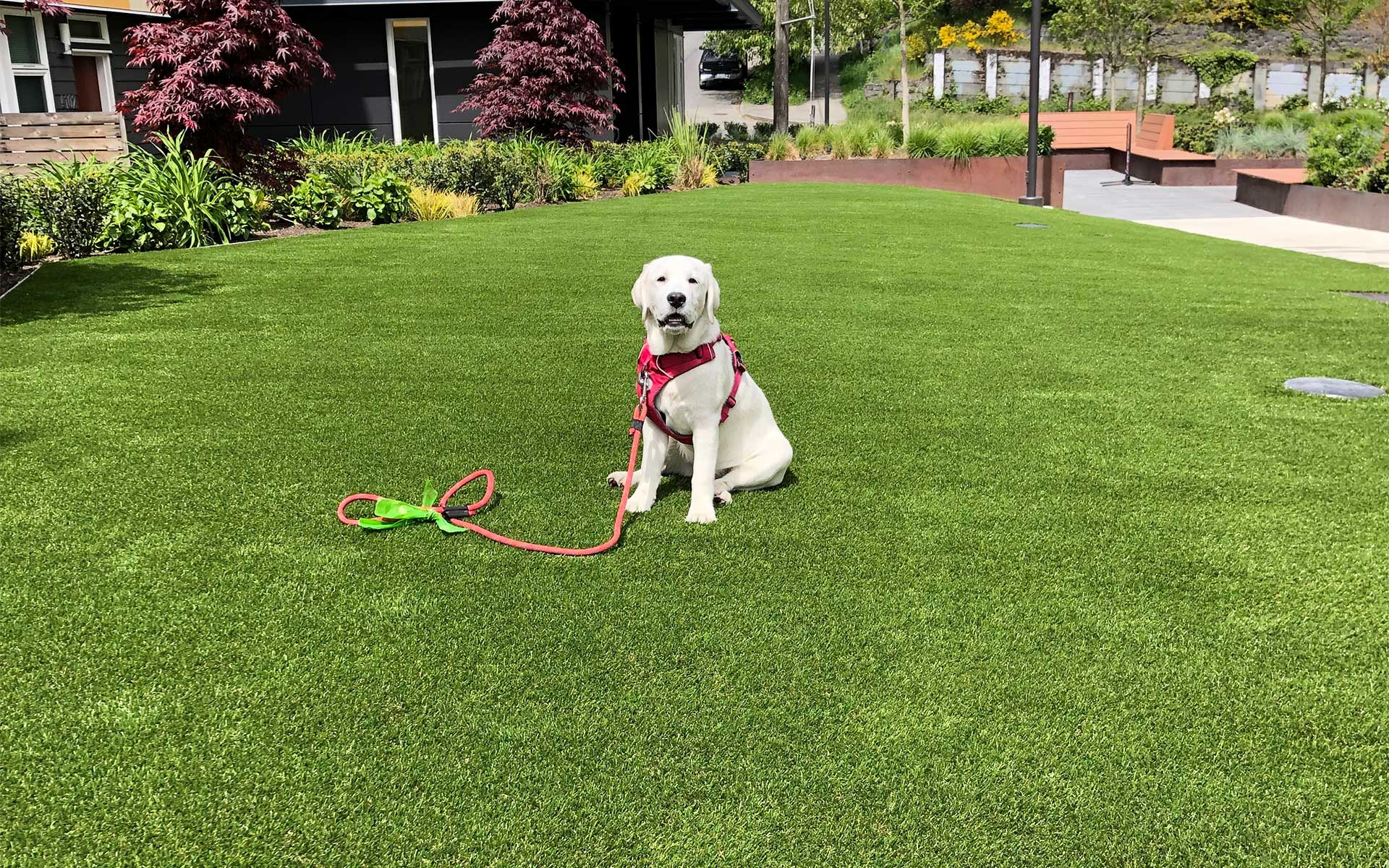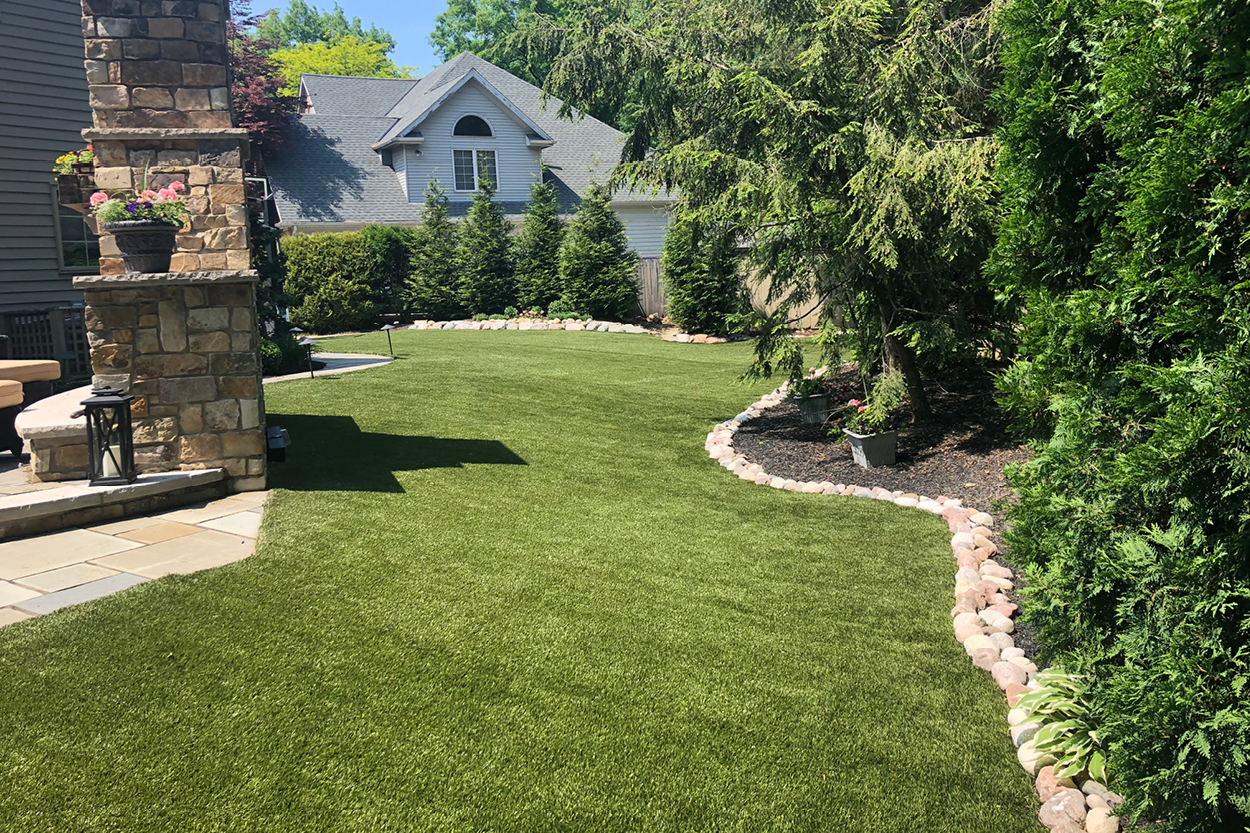Look Into the Environmental Advantages of Opting for Artificial Turf Solutions
The adoption of artificial grass remedies offers a compelling chance to attend to pushing ecological obstacles. By significantly decreasing water use and decreasing the application of hazardous chemicals, these options not just advertise lasting landscape design yet also shield local ecological communities.
Water Conservation Perks
One of the most considerable advantages of man-made grass is its capability to preserve water. Typical grass lawns require substantial irrigation, especially in locations vulnerable to dry spell or water constraints. On the other hand, fabricated lawn does not need watering, substantially decreasing the overall need for water sources. This function is especially helpful in dry regions where water scarcity is a pushing problem.
By removing the demand for normal watering, synthetic grass contributes to sustainable landscape practices and assists mitigate the ecological impact of extreme water consumption. In addition, the conservation of water reaches the reduction of overflow, which can bring about soil erosion and river contamination.
Additionally, the installment of synthetic turf enables municipalities and home owners to allocate water resources a lot more efficiently, concentrating on necessary usages such as drinking water and agriculture. The change in the direction of synthetic grass not just advertises liable water use but likewise lines up with more comprehensive ecological objectives targeted at preserving natural sources.
As areas significantly focus on sustainability, the water conservation benefits of synthetic grass offer an engaging instance for its adoption in domestic and industrial landscaping projects.
Minimized Chemical Usage
The shift to synthetic grass substantially lowers the reliance on chemical treatments frequently used in all-natural yard maintenance. Traditional lawn monitoring commonly entails the application of chemicals, herbicides, and fertilizers to advertise growth and control insects. These chemicals can pose threats to human wellness, neighborhood wild animals, and the atmosphere, contributing to dirt and water contamination.
In contrast, fabricated grass removes the demand for these dangerous substances. By decreasing the release of synthetic substances into the environment, artificial grass advertises healthier dirt and water systems.
Moreover, the absence of chemical drainage related to man-made lawn setups aids protect regional rivers from pollution, supporting marine life and maintaining biodiversity. Phoenix turf companies. As areas increasingly prioritize sustainable techniques, choosing synthetic grass provides a sensible solution that aligns with environmental conservation goals. With this change, residential or commercial property owners can enjoy lavish green areas without jeopardizing environmental wellness, leading the way for a much more sustainable future
Lower Carbon Footprint

Furthermore, the installation of synthetic turf can result in significant water conservation. All-natural view yards require considerable amounts of water for irrigation, which not only includes in the carbon impact related to water removal and therapy yet additionally pressures local water sources. On the other hand, synthetic grass needs minimal maintenance, requiring no watering, thus substantially lowering water use and its connected power expenses.
In addition, the longevity of synthetic grass adds to its lower carbon influence. With imp source a life-span of approximately 15 years or even more, the requirement for regular replacements is diminished, causing much less waste and reduced energy usage in manufacturing and getting rid of standard lawn options. In general, synthetic turf offers a lasting choice for ecologically conscious landscape design.
Habitat Preservation
Environment conservation is an essential factor to consider in the argument over landscape design options, especially when contrasting man-made turf to all-natural turf. Natural lawn lawns often call for considerable upkeep, including the use of pesticides, herbicides, and plant foods, which can negatively impact neighborhood ecosystems. These chemicals can seep into the soil and rivers, harming native plants and fauna and interrupting local habitats.
In comparison, synthetic grass offers a chance to decrease the ecological impact of landscaping. By going with artificial turf, property owners can decrease the interruption of natural environments connected with typical yard care methods. Synthetic lawn gets rid of the demand for dangerous chemicals, consequently protecting neighboring wildlife and maintaining the integrity of bordering environments. Furthermore, the installation of man-made lawn can result in the conversion of previous yard locations into more biodiverse landscapes, such as pollinator yards or indigenous plant areas, which can sustain neighborhood wild animals.
Inevitably, the change to synthetic grass not just saves water and minimizes maintenance efforts but also cultivates an extra harmonious relationship between human tasks and the native environment, promoting environment conservation while doing so.
Long-Term Sustainability
Long-term sustainability is an important consider assessing the benefits of synthetic grass over conventional grass yards. next page One of the most substantial advantages of man-made turf is its toughness; it can last as much as 15-20 years with minimal upkeep, whereas natural turf requires frequent reseeding and replacement. This long life reduces the requirement for continuous sources, such as water, fertilizers, and chemicals, which are crucial for preserving a healthy and balanced turf lawn.
In addition, man-made turf adds to a reduction in carbon exhausts related to lawn treatment tools. Traditional yards often call for gas-powered mowers, leaners, and blowers, every one of which add to air contamination. Arizona artificial turf. In contrast, fabricated turf removes the need for such devices, advertising a cleaner environment
Furthermore, the manufacturing of synthetic grass significantly utilizes recycled materials, boosting its sustainability profile. As producers take on environmentally friendly techniques, the ecological footprint of synthetic lawn remains to reduce.

Conclusion
The fostering of synthetic grass remedies offers substantial ecological advantages, consisting of substantial water preservation, minimized reliance on dangerous chemicals, and a lower carbon impact. Fabricated lawn aids in protecting all-natural habitats by lessening land disruption and promoting lasting sustainability through the use of sturdy materials. Jointly, these factors highlight the potential of synthetic grass to contribute favorably to environmental health and supply a practical choice to traditional landscaping practices in a significantly resource-conscious world.
In comparison, synthetic grass does not need watering, significantly lowering the overall need for water resources. By reducing the launch of artificial compounds right into the environment, synthetic turf promotes healthier dirt and water systems.
Additionally, the installment of fabricated turf can result in considerable water preservation. In comparison, artificial lawn requires very little maintenance, needing no watering, therefore dramatically lowering water usage and its linked energy prices.
